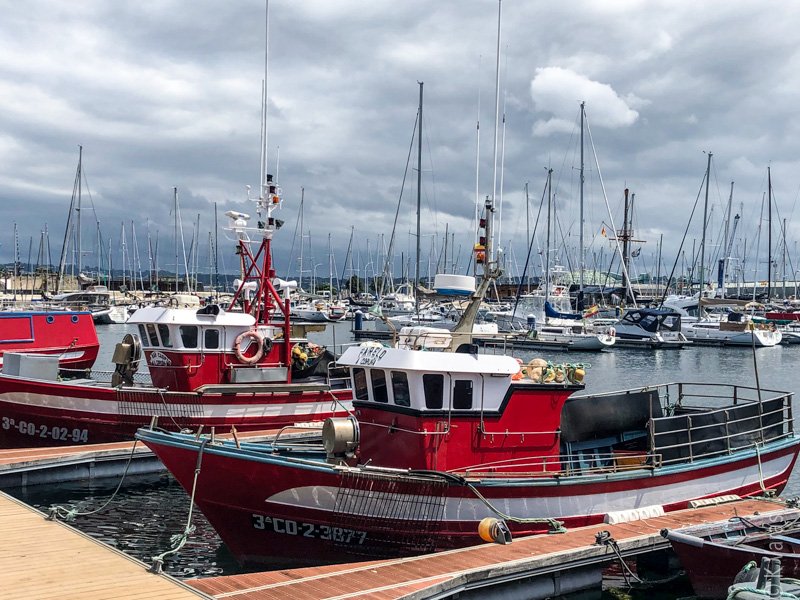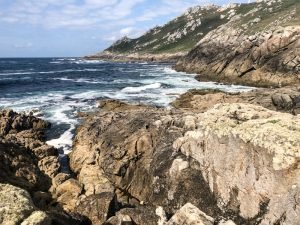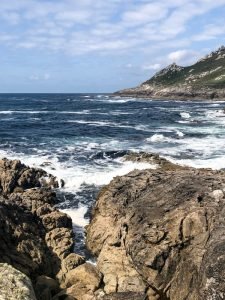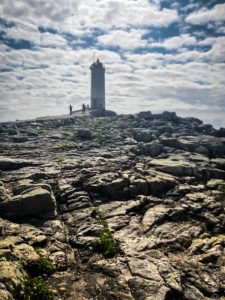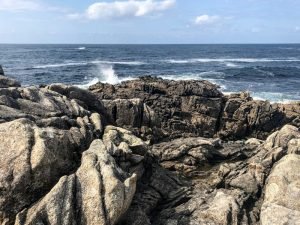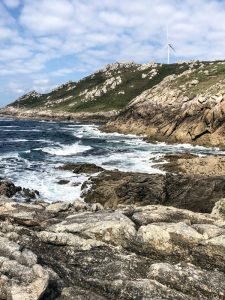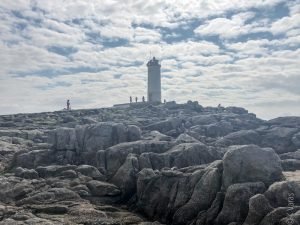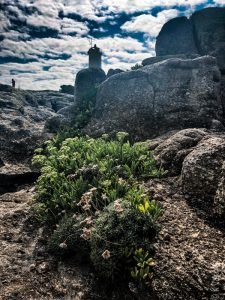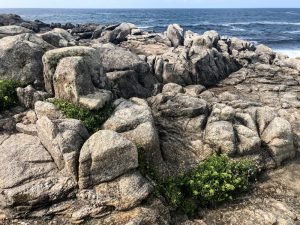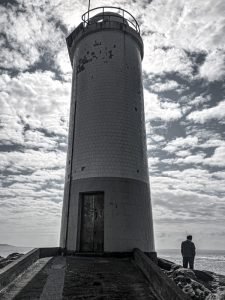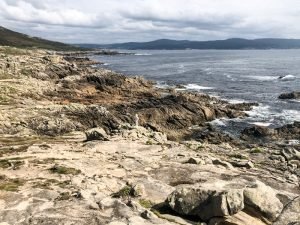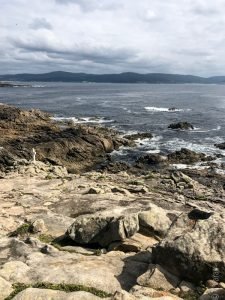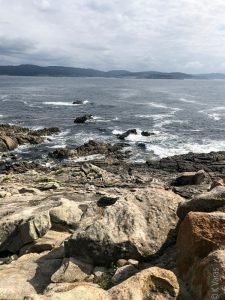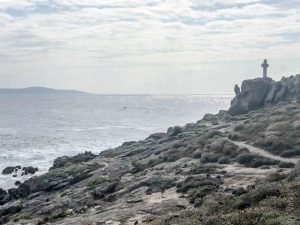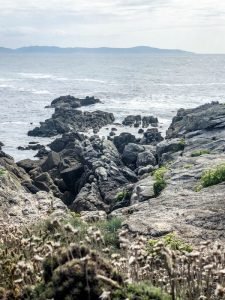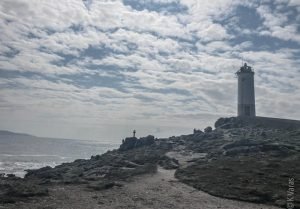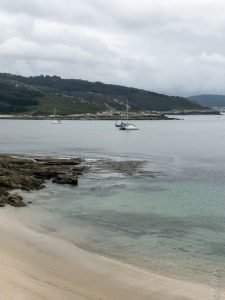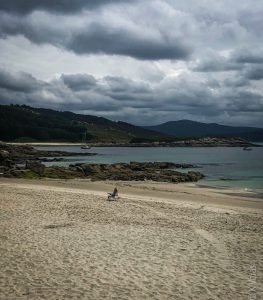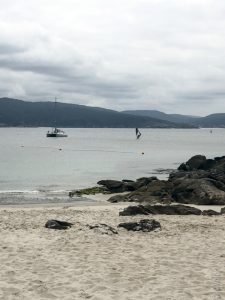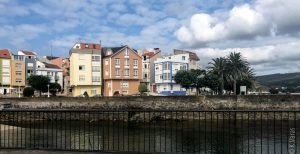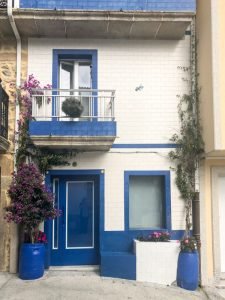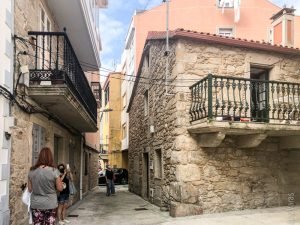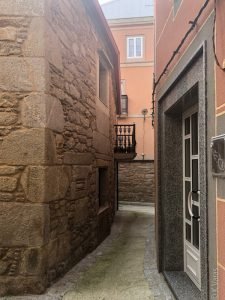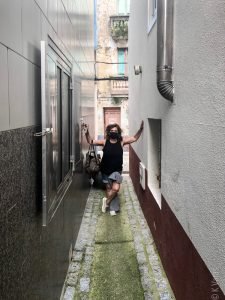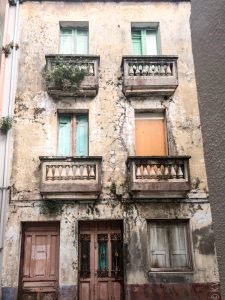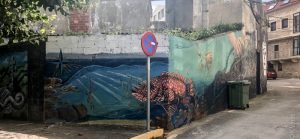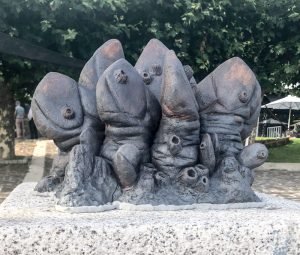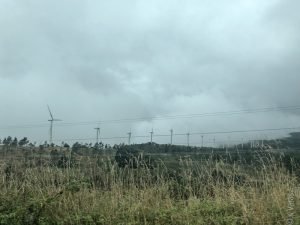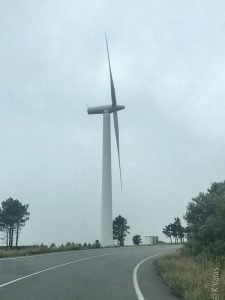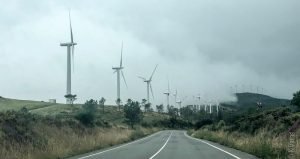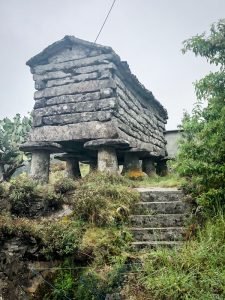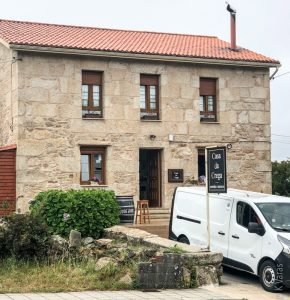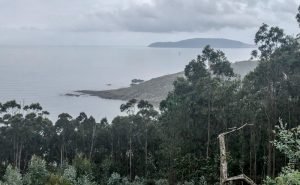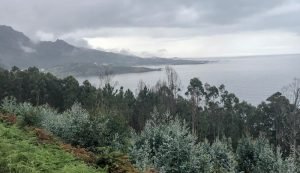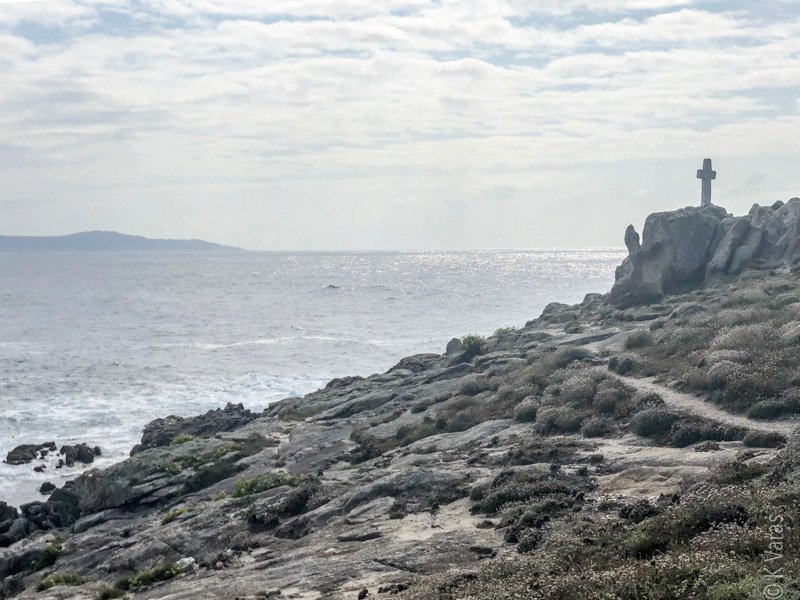
Rías Baixas, Day Three
We had been very lucky with the weather the last two days but luck can only take you so far and this is Galicia, after all: unpredictable weather is kinda a thing here and that is definitely part of its beauty. The clouds didn’t deter us from having a blast, however, so after a quick breakfast, we settled our very economical bill at the hotel and headed north. The idea was to cut across through the inland roads back towards Carnota where Fely said a restaurant we should try for lunch was located before indulging my desire to visit the End of the World, or Finisterra, the presumed westmost continental point in Europe. At least the Romans thought so. As with many geographical landmarks, measurement was, until recently, very tricky and there are at least two other points further west in Europe, one in Portugal (Cabo da Roca) and the other in Spain (Cabo Touriñán), a little bit north of Finisterra. Nevertheless, most people have never heard of the other two and tourists flock to Finisterra and its various holy rocks. I don’t know how the Romans figured out this was the place to see the last sun of the day, but in true christian fashion, its significance was borrowed (appropriated?) by the faithful and it became the final destination of many pilgrims walking the Camino who, upon completing their trek to Santiago de Compostela, continue the extra 90 km to watch the sun set. I was now hoping to make my own pilgrimage too.
As we traversed the backcountry on the way to Caldebarcos (the place for lunch), I was constantly fascinated by all the wind turbines we seemed to get very close to. The fact that we were in a very hilly area probably contributed to this feeling but the way the huge blades would all of a sudden appear out of the ever-present fog made the drive even more spooky.

The other recurring theme were the hórreos, the stone structures that front most of the houses in rural Galicia. They have a somber look about them, even a morbid one, especially if you remember the typical mausoleums found in old European-style cemeteries (not the sprawling lawn ones in North America where land is plentiful, clearly). Many are adorned with stone crosses and other carvings which, at first, suggests a religious nature, but their use was an agricultural one, usually as granaries or as fishing gear and net storage. They are quite ubiquitous in this region and I had been trying to get a good photo of them for a while but doing so from the bus has been proving a challenge. Fortunately, I was now travelling by car and stopping where you want is the great advantage of doing so. When we saw a particularly interesting one, Sagrario stopped and I quickly got a close-up of an hórreo that looked ancient enough. I read somewhere that none remain that are older than the XV century but historical records show that the hórreos have been around long before the Romans showed up. Given how much stone there is around here, I am not surprised at all: nothing else could withstand the winds and rains that batter these lands.

Eventually we did emerge from the fog as we returned to sea level but, to our great disappointment, Restaurante Casa da Crega in Caldebarcos was closed and we had to find another place to eat. The time of day was also not working for us as we realized we wouldn’t have time to go to Finisterra and make it back to A Coruña at a reasonable hour. So, instead, I took a longing glimpse at the End of the World from across the water and we turned back inland to go north towards a place called Corme, situated on the north side of the Ría de Corme e Laxe. Technically, we had crossed over into las Rías Medias but I won’t be splitting hairs on the exact geography here. The point is, there was sun and good food here and since every great meal (more rape stew!) is followed by a restful siesta, we took ours at the little beach just by the restaurant. Life is so difficult here (major eye roll).
But we were not done with amazing views just yet; we may have been able to go visit the lighthouse at Finisterre, but this didn’t mean we couldn’t enjoy one near-by. Faro do Roncudo stands guiding ships skirting the Iberian Peninsula on the way to the Bay of Biscay. The only problem is, the waters around here are so treacherous, the whole area is called the Costa da Morte (Coast of Death), and there have been countless lives lost over the centuries on these rocky shores. No wonder the Romans feared going beyond and thought this the end of the world. You don’t have to be an ancient Roman to appreciate the vastness of the Atlantic to the west nor the furious crashing waves of the ragged Galician coast. The lighthouse of Roncudo stands alone on an outcropping, surrounded by hills to the east, but offers a great view of much of the shore to the south. I made my way down the rocks to just sit down and take it all in: the massive boulders, the waves crashing into them, the constant wind, the incredible variety of flora somehow clinging to life in such an inhospitable place. All I could think was that I really, really, really wanted to spend a lot of time in a place like this just staring at the waves. There is something magical about it and if I ever win the lottery, I am going to buy (build?) a little house with a view to a rocky shore where crashing waves can put me into a trance like the one I experienced today. In Galicia, of course. It was very difficult to leave but the others wouldn’t do so without me so I tore myself away, took a closer look at the lighthouse and the Cruces do Cabo, crosses placed among the rocks to the south commemorating those souls lost in these wicked waters.
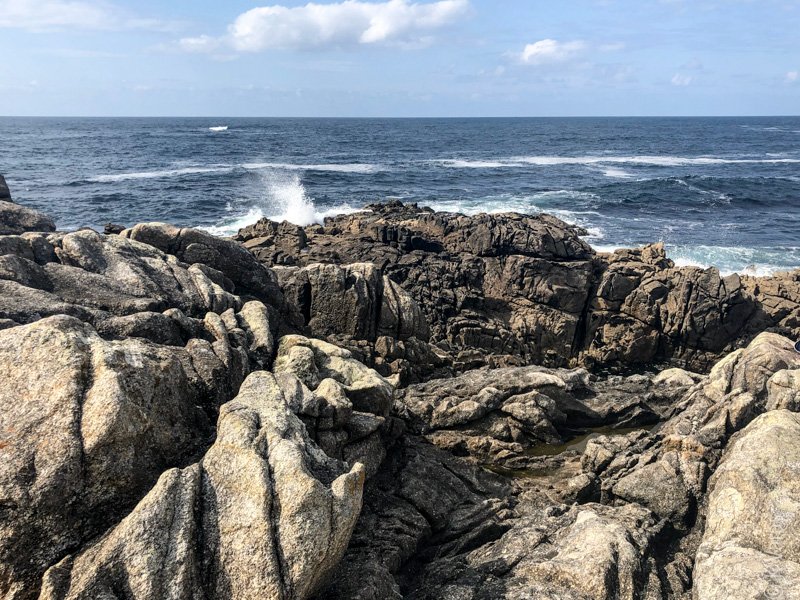
The adventure wasn’t quite over, however. We retraced our steps a bit and went back to the very cute little town of O Porto do Corme where we explored a little. As with all the places I have found in Spain, even the smallest pueblo has something to offer and this one surprised us with some very narrow streets, some murals, interesting architecture, and very fishy street art. Never a dull moment … but now it was time to go home.

The drive back was a little subdued, all of us tired but very satisfied with a great three days of great food, lots of giggles, sightseeing, and sun! And we all still liked each other! The one thing I realized while in Galicia was that I absolutely love it and only wish the weather was as awesome as it was these few days but all year long. That said, I think I will have to plan a storm-watching holiday one day, if only to experience the sheer fury of Mother Nature from the warm refuge of a hotel or a little summer house, of course.
